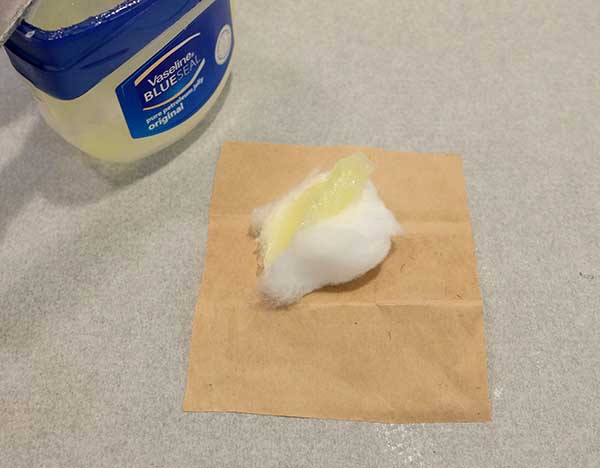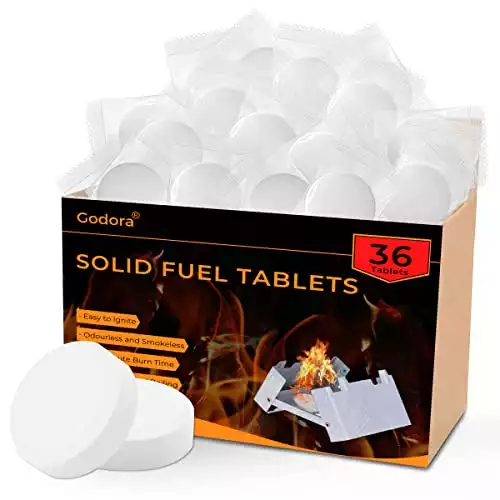Almost everyone knows how to start a fire. You take a lighter and a roll of old newspaper, light it up, let it breathe for a second, then cover it with some dry grass and twigs before piling larger pieces of wood on top of it. Fifteen minutes later and you’ve got a fire going.
What happens if you don’t have a roll of newspaper at hand, though? How do you start a fire with household items?
In this article, we won’t be focusing on alternative fire starting methods, such as flint and steel, ferro rods, or the hand drill. Instead, let’s take a look at some items we all have in our homes that will burn easily.
Don’t attempt any of these methods indoors.
1. A Battery and Steel Wool
Steel…burning? You’d never guess it, but it’s entirely possible to start a fire with steel wool. Although I prefer using it to scrub my frying pan, steel wool fibers are so fine and thin they’ll light up if you hook them up to a 9-volt battery.
To start a fire, just mix your steel wool with something that will catch fire quickly (dry grass, for example) and touch the steel wool with the battery connectors. You don’t need to use any wires to connect the two sides of the battery, you just need to touch the steel wool with the two connectors.
Steel wool won’t catch fire as intensely as paper. In fact, there’ll be no flame at all. Steel wool threads, however, will start burning, and this will create enough heat to light up the dry grass.
This is a very handy trick, and it’s especially useful if you’re going camping. You need to bring steel wool either way because you need to wash your dishes, and in case you lose your lighter, matches, or flint, you can easily start a fire this way.
Note: Please don’t breathe in steel wool fumes. Once you start the fire, pull the steel wool out, and if you can’t do that, stay away from the fire until the steel wool burns out.
2. A Battery and a Gum Wrapper or Aluminum Foil
Here’s another example of using electricity to start a fire. For this method, you need an AA battery and an aluminum gum wrapper or aluminum foil (but it’s definitely easier with the gum wrapper).
Cut the gum wrapper into an hourglass shape and make the narrow part as narrow as possible. Then, take the wrapper and place each end at one end of the battery. The foil should be touching the ends, and the paper should be facing you.
Since the paper can’t take all that heat, it will light up at the narrow part. Know that the fire won’t last for very long and it won’t be intense, but you can use it to light something else on fire.
An alternative method is cutting a narrow, hourglass shape out of aluminum foil. Follow the same steps and the narrow part will heat up and hopefully catch fire, which you can use to light up dry grass.
Note: Wear gloves when you’re doing this.
3. Crayons
Crayons are made from two things: paraffin wax and paper. If you rip off the top part of the crayon and light it with matches or a lighter, it’ll burn for about 15 minutes.
This was even confirmed by Crayola, the world’s leading crayon manufacturer. Since crayons can provide a stable but low flame for about 15 minutes, I can recommend using them to start a fire, although I wouldn’t recommend breathing in burning crayon fumes.
4. Guitar Picks
Guitar pics are usually plastic, and you can use a knife or a box cutter to grate the edge of them. That way, you’ll get a lot of tiny plastic bits (they’re almost dust), which will catch fire easily. They won’t burn for a long time, but you can use them to build a fire.
You can use the same method with most products made from hardened plastic. However, because plastic releases extremely harmful fumes when it’s burned, you should only do this in an emergency situation with no other options.
5. Duct Tape
One of the most versatile tools known to man is also a great fire starter. Since it’s made from flammable plastics that burn slowly and are also covered in flammable glue, you can use duct tape to start and provide warmth for a fire.
All you have to do is roll a foot (or a few feet) of duct tape into a ball and set it on fire. It will burn for quite a while, so you can slowly build your fire on top of it. Again, this will release toxic fumes, so reserve for desperation.
6. Petroleum Jelly

Vaseline, also known as petroleum jelly, is flammable on its own, but it’s not that good of a fuel. Instead of just lighting it up, you should rub it into a cotton ball or a cloth and then light that up.
Just like duct tape, petroleum jelly balls will burn for quite a while, allowing you to build your fire. Because of this, they’re much better fire-starting items than steel wool and gum wrappers.
7. Hand Sanitizer (and Other Alcohol)

Hand sanitizers contain alcohol, mostly ethanol or isopropyl alcohol. Wouldn’t you know it, both of those alcohols are extremely flammable when used right.
Some people (myself included) always keep a bottle of wound disinfectant (also with high alcohol content) at home, and you can use this to start a fire just as well.
Don’t light up the hand sanitizer itself, though. Instead, apply it to a cotton ball or a cloth, just like petroleum jelly, and then light that. You can also mix it with sawdust or dry grass to start a fire.
An alternative method is pouring gel hand sanitizer into a cup and mixing it with some salt. The salt will force the flammable alcohol away from the gel, after which you can strain it and use it as a fuel.
8. Acetone (Nail Polish Remover)
Acetone itself is not flammable, but the fumes it releases are. You can start a fire very easily with it. All you have to do is build your fire completely, from the bottom to the top layer, preferably a traditional pyramid-shaped fire, and pour a bit of acetone over the bottom layer.
All it takes is a single strike with a flint, and the fumes will immediately catch fire, lighting up the prepared fire.
You can do the same thing with just a little bit of paint thinner. Whichever method you choose, make sure not to burn your eyebrows.
9. Solid Fuel Tablets
Solid fuel tablets are probably the easiest way to start a fire. All you have to do is build your fire, place a solid fuel tablet at the bottom of it, and light it. However, people avoid using them because of the toxic (and smelly) fumes they let off.
If you build a good fire, though, you’ll only need a small fuel tablet to start it properly, and that won’t smell too bad, nor will it intoxicate you.
10. Dryer Lint

Dryer lint catches on fire incredibly easily and you can use it as a bottom layer in a fire or a fire starter. It’s incredibly easy to light with just a flint. The best part is, if you want to make your own fire starter kit for camping or hiking, you can collect the lint, rub petroleum jelly on it, and pack it in small rolls. The lint will catch fire easily, while the petroleum jelly will make it last long!
It’s best to do this with lint from natural fibers. Petroleum-based fibers, such as polyester, may release toxic fumes when burned.
Learn how to make dryer lint firestarters.
11. Egg Cartons
Similar to paper or newspapers, egg cartons are easily combustible and they create a nice flame that will spread through the fire you built.
Aside from burning an egg carton itself, you can rub some petroleum jelly on the egg carton, which will create a longer-lasting flame.
Just keep in mind that some egg cartons are made from polystyrene, which releases carbon monoxide and other toxic chemicals when burned. It may be best to stick to paper-based egg cartons unless you’re desperate.
12. Chips (and Other High-Fat Snacks)
Chips are a food rich in fats, and fat can burn for a long time. Tortilla chips are perhaps even better than potato chips because their fat percentage is usually higher.
To start a fire, just light a chip with a lighter and put it at the base of your fire. The flame will last long enough for the twigs and everything else to catch fire.
13. Fuel
Finally, we have fuel: gas, diesel, and kerosene. People often forget that you can use more or less any type of fuel to start a fire, but before I go on, I just want to advise you to keep fuel containers away from open flame.
Just like with acetone, all you have to do is pour a little bit of fuel into the base of your fire and light it with a lighter or a flint. And when I say “a little bit of fuel,” I really mean a little bit of fuel. If you add too much, the fire may get out of control!










